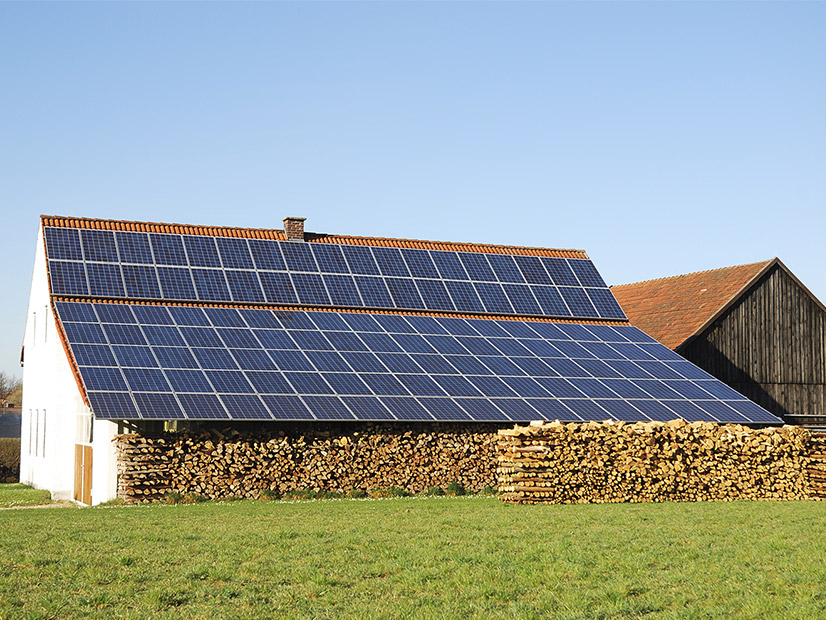Massachusetts is trying to balance affordable electricity rates with the need to properly compensate early adopters of solar in the state.
The Department of Energy Resources in 2019 suggested a change to the state’s Renewable Energy Portfolio Standard (RPS) that it says is necessary to save ratepayers money. Others, however, are critical of the proposal, which would limit participation in the state’s first solar renewable energy certificate (SREC I) program to 10 years.
The legislature’s Joint Committee on Telecommunications, Utilities and Energy held a hearing Wednesday to query suppliers and clean energy experts on DOER’s final proposed RPS changes.
Altering the eligibility period would reduce SREC I benefits for 11,000 qualified projects, according to Steven Kaufman, managing director of SREC management provider Clean Asset Partners.
“It would end the program about three years early for the earliest participants and by at least one quarter for the last projects to begin participating,” he said.
SREC I was launched in 2010 as a carve-out to the state’s RPS, and a second but similar iteration of the SREC program launched in 2014. In 2018, the state launched its Solar Massachusetts Renewable Target program, which is tariff-based instead of REC-based.
The first SREC round has been an expensive part of the RPS for ratepayers.
In 2019, the SREC I program cost for an average ratepayer was $3.46 per month, while the cost for clean energy resources that are not part of the solar carve-out cost the average ratepayer $1.23 per month, Eric Steltzer, director of DOER’s renewable energy division, said during the hearing.
In addition, he said, SREC I from 2010 to 2019 accounted for 40% of the RPS program costs while providing 11% of the RPS program generation. By comparison, other resources under the RPS program accounted for 28% of the total program total costs and provided 78% of the generation.
DOER’s proposed change to SREC I, Steltzer said, would provide savings to ratepayers without causing a reduction in clean energy to the market.
SREC I projects have seen a “meaningful amount of return on investment over 10 years,” Steltzer said, adding that, in some cases, the returns have exceeded 50% of the initial cost of the system. When projects are no longer eligible for SREC I, they will still be able to receive revenue on regular RPS program RECs, he said.
The Solar Energy Business Association of New England believes the agency’s approach to realizing ratepayer savings is the wrong path forward.
“Admittedly, many receiving credits under the SREC I program have done well financially,” the association’s director, Nick d’Arbeloff, said. “But this is not about levels of financial gain; it is about consistency and the erosion of confidence in Massachusetts solar policy.”
Berkshire East Mountain owner Jon Schaefer told legislators his ski resort made financial commitments to renewable energy projects based on SREC I regulations put forward by DOER.
“How can DOER and the leadership of the commonwealth ask citizens and businesses to invest in the grid of tomorrow when it can’t own its commitments today,” Schaefer said.
The need to keep consumers’ electricity rates down and encourage clean generation is creating tension in the state.
“We want to reward early adopters, but we have to electrify everything,” Sen. Mike Barrett (D) said.
The rate per kW must be low if the state is going to require residents to charge their cars instead of filling them with gasoline or keep their house warm with electricity instead of natural gas, he said.
Early adopters of solar and wind projects, he said, “have made good money, and we’ve got to keep rates for electric ratepayers low because they, in the end, will pay all of this.”
But Roger Freeman, a small business owner with a 200-kW rooftop solar system, said every system is different.
“This hasn’t been some giant money winner for us,” Freeman said. Most of the revenue from his solar project comes from REC sales, which he uses to pay the loan he took out to build it.
If he loses the RECs, he will be thousands of dollars in debt every month.
Freeman said DOER’s proposed change should not be retroactive, because it “does have an impact on real people.”




